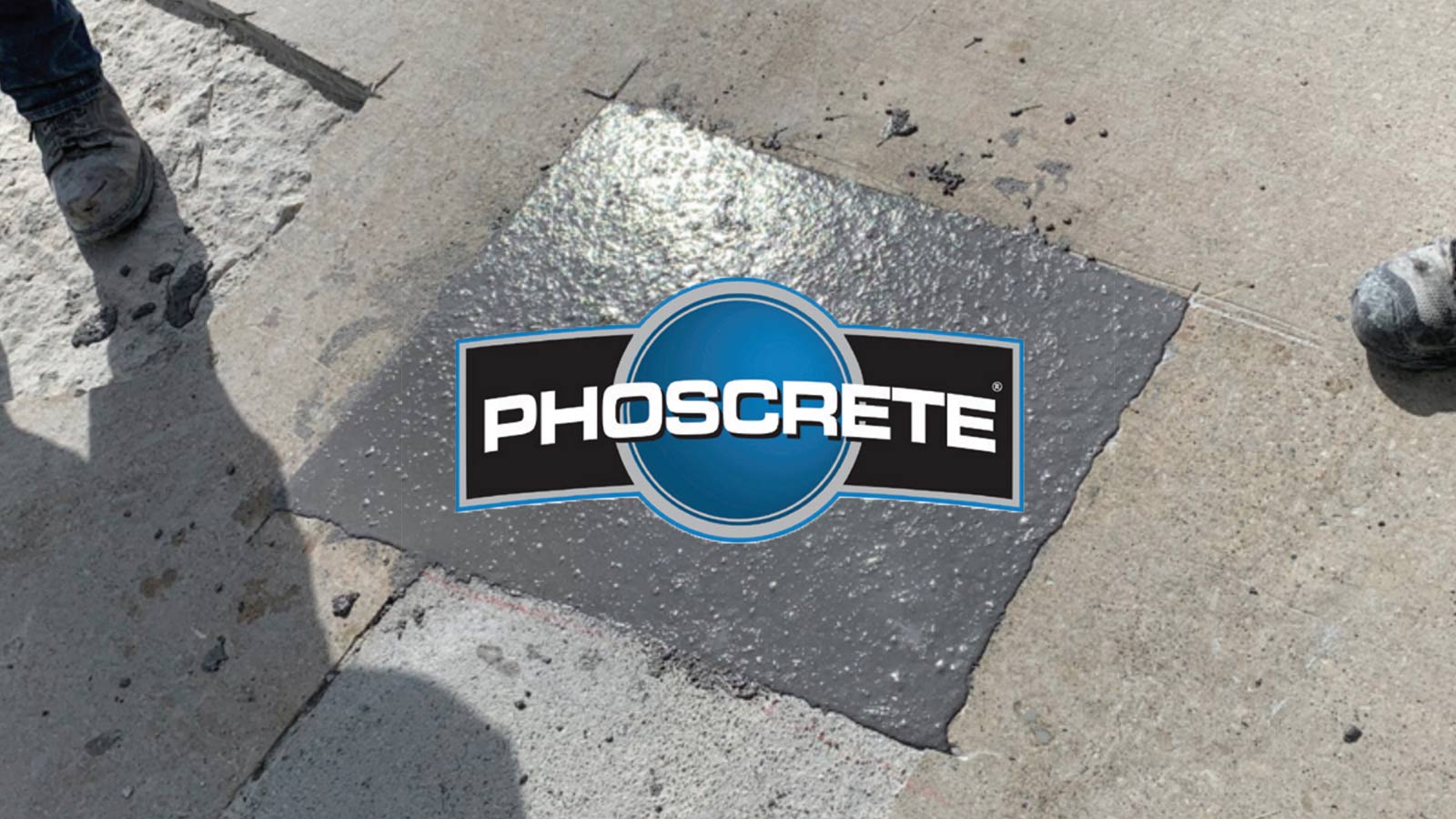Protected: Phoscrete Endure, Powered by PoreShield™, Increases Longevity of Concrete Repairs

Phoscrete Corporation offers concrete repair products to fix spalled concrete on bridges, roads, runways, culverts, parking decks, industrial floors, loading docks, broken walls, stairs, sidewalks and driveways. Product tests on previous patches in some of the heavier freeze/thaw states revealed early salt scaling from road salts.
“We had some instances in Chicago and Iowa, in particular, where we noticed that, after several years, our materials were not holding up as well as desired,” said Brian Mintz, general manager for Phoscrete Corporation. “Salt scaling was causing a material loss on the surface of the road.”
In addition to his duties at Phoscrete, Mintz serves as Chair of the AASHTO TSP2 Innovative Technology Demonstration (ITD) program, which introduces a variety of new technologies available for pavement and bridge preservation.
Mintz was intrigued when PoreShield (SME-PS) was accepted into the ITD program in 2021 and learned about how it is absorbed into concrete to protect it from chlorides and freeze/thaw damage. Once Mintz began to understand how PoreShield prevents corrosion and other concrete damage, he thought the technology could help Phoscrete solve the issues that they were having and protect against long-term salt scaling.
Enhanced Durability
“We began testing by directly spray-applying PoreShield to the surface of cured Phoscrete samples. Then we asked an independent lab to test for salt-scaling and freeze-thaw durability. The results showed a significant improvement over Phoscrete without application of PoreShield,” said Mintz. “We then tested in-house using PoreShield as an admixture when mixing Phoscrete. With no changes to compressive, flexural and bond strengths, we felt we had a winner. So, we submitted Phoscrete with the PoreShield admixture to AASHTO’s NTPEP for Rapid Setting Concrete Patch testing.”
One of the additional tests Phoscrete conducted, ASTM 672 for salt-scaling, demonstrated zero material loss and zero visibility rating on the PoreShield-treated samples after 50 cycles – far beyond the industry standard of 25 cycles. The testing lab is continuing to run those tests up to 100 cycles. So far, the testing indicates that PoreShield protects the concrete and the Phoscrete patch compounds for the life of the structure. In addition, Phoscrete also conducted the ASTM 666 Procedure A, a more rigorous test for freeze/thaw damage that runs 300 cycles.
“PoreShield enhanced the durability of Phoscrete repairs and the surrounding concrete,” said Mintz. “We had excellent results and were very excited to sign an agreement to market the PoreShield technology under our brand Phoscrete Endure.”
Currently, Phoscrete offers three products that are powered by PoreShield to enhance concrete durability through the Phoscrete Endure product line. Phoscrete Endure is a topical spray-applied product for use as a preventative concrete preservation treatment for bridge surfaces, highway PCCP joints and other concrete surfaces. The other three products, Phoscrete HC-Endure, Phoscrete Formula 3E-HC, and Phoscrete Formula 3E-VO are patch compound products that incorporate PoreShield into the formulation as an admix component to repair existing concrete.
Efficient Application
To maximize treatment during a lane closure, Phoscrete recommends first applying Phoscrete Endure topically spray-applied product to the full bridge deck and then immediately repairing expansion joints with a Phoscrete Endure admixture product.
“The biggest frustration of anybody doing bridge preservation, repairs and maintenance is the cost of a lane closure – the more work that you can get done while the lane is closed, the better,” said Mintz. “The best time to treat the deck and think about the preservation aspect of it is during those scheduled lane closures, so you don’t have to close the lane for the preservation process as much as for the repair process. That’s definitely a cost savings to DOTs and a huge cost savings to the driving public.”
PoreShield also provides long-term protection that extends the life of concrete and repairs, making the concrete itself more efficient and sustainable.
“No one wants to be doing the same repairs twice,” said Mintz. “Phoscrete Endure, powered by PoreShield, is going to protect the concrete and keep damage from occurring for 10 years or longer.”
Safe and Easy to Use
The PoreShield technology also makes mixing and clean-up easier. Phoscrete Endure comes in a 10-ounce package that can be simply added as an admixture without any measuring.
“We found that once we added the Endure admixture to the process, Phoscrete just kind of slides right out,” said Mintz. “Your buckets, trowels and mixing paddles are all clean, so it makes it easier to finish and work with. It really helps the crews get off the bridge faster by reducing the amount of time it takes to clean everything up. It’s an added benefit for working with our material now.”
In addition, Phoscrete Endure, powered by PoreShield, is a very low VOC product that is safe for workers to handle. It is also USDA BioPreferred.
“Phoscrete Endure doesn’t smell bad and everything cleans up with water,” said Mintz. “The workers don’t have to wear PPE when spraying Endure on the decks and for the admixture the workers just wear standard PPE. It’s a lot safer for the workers, in comparison to other products on the market.”
Overall, Phoscrete is seeing tremendous benefits from incorporating the PoreShield technology into their Phoscrete Endure products.
“PoreShield helps protect the concrete better. The customers like using it better. The actual installers are much happier because of how easy it is to get a better finish and all the material out of the bucket,” said Mintz. “It also prevents corrosion and other concrete damage, so our repairs are lasting longer and that’s really the most important thing long-term.”
This communication is funded by soybean checkoff dollars.



